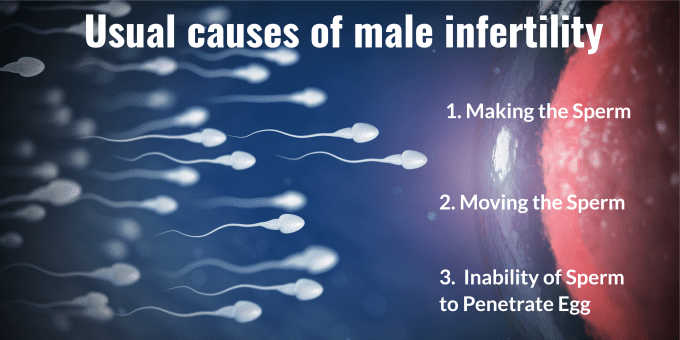Let’s go back to the basics, first. A man creates sperm in his testes, and stores them inside long tubing attached to each one. Many people confuse semen and sperm; semen includes the sperm and the fluid which is made to nourish and transport the sperm. In a typical ejaculation, there are around 150 million sperm released through the penis in less than a teaspoon of semen.
The process of creating and releasing sperm is dependent upon a male’s hormones, including testosterone, as well as the nervous system. The nervous system plays a key role in ejaculation, which is why many paraplegics need assistance in reproduction.
A fertile woman ovulates one time a month. Usually this happens around 2 weeks before her menstrual period begins. Couples are encouraged to have sex up to five days before ovulation is expected. This could result in a pregnancy, as sperm can live up to 3-5 days within a woman’s body. Sex that is more than 2 days after ovulation will not result in pregnancy or conception. In essence, timing is everything when trying to conceive.
That being said, 6-12 months of unprotected intercourse still meets an infertility diagnosis, even if the couples are not “trying”. Statistics tell us that within one year, 85 percent of couples having unprotected intercourse will become pregnant. After six months, it is appropriate to seek the advice and testing from a Reproductive Endocrinologist, also known as a fertility specialist.
The usual causes of male infertility include problems with making the sperm, moving the sperm, or in sperm function/ability to penetrate or fertilize the egg.

Some issues affecting a male’s sperm count and quality include the following:
Varicocele
A common and correctable cause of male fertility problems. Around 1/3 of men who need fertility help will have this abnormality, which is from multiple bulging veins on top of the testicle.
Undescended Testicle
This is when a man’s testicle does not move from inside the body into the scrotum prior to birth.
Prior Infection either harming the testes or which causes a fever
Chemotherapy and Medications Including:
- steroids, especially male hormones such as testosterone
- medications for seizures
- calcium channel blockers
- anti-androgen medications
- Genetic malformations
Hormonal irregularities
Sometimes, these issues can be corrected; other times they cannot. The most important thing is to be properly evaluated by a doctor you can trust. Many times, male fertility patients will need both the care of a Urologist, combined with treatments from a Reproductive Endocrinologist to result in a successful pregnancy.
Some men have normal sperm production, but it can’t get where it needs to go. Men who have this issue produce sperm in the testicles, but the sperm does not get into the semen or the semen does not get ejaculated. Reasons for this type of male infertility include:
Retrograde Ejaculation – when ejaculation is backwards, moving into the bladder instead of through the penis.
Absence of essential tubing called the vas deferens
Obstruction – can occur anywhere in the tubing throughout the penis
Anti-sperm antibodies – auto immune cells which kill a man’s own sperm
Up to 25 percent of men who have male infertility will not be able to identify any direct cause of the sperm abnormalities.
Usually infertile couples will be assessed for fertility issues at the same time. For men, the first test that is conducted is a semen analysis. Semen is collected through masturbation (usually at home or in a private collection room at one of our 4 clinics) in order to assess the sperm count, shape, and movement.
If it is determined that a man has abnormal semen parameters, he may seek additional testing and treatment through a urologist. In addition, there are many fertility treatments that can be used, such as IUI (intra-uterine insemination) and IVF (In vitro) which have made conception possible despite sperm abnormalities and male infertility.

